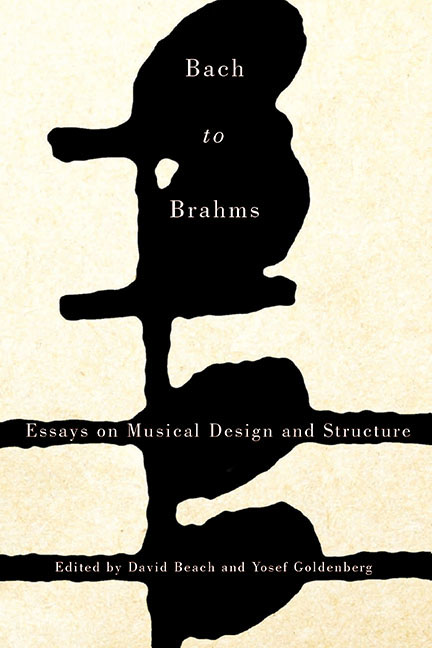Book contents
- Frontmatter
- Dedication
- Contents
- Introduction
- Part One Structure and Design
- 1 Strolling through a Haydn Divertimento with Two Heinrichs
- 2 Ritornelli or Soli: Which Did Mozart Write First in the Opening Movement of His Violin Concerto K. 207?
- 3 Outer Form, Inner Form, and Other Musical Narratives in Beethoven's Opus 14, No. 2
- 4 Temporal Poise and Oblique Dynamic in the First Movement of Beethoven's “Archduke” Trio
- Part Two Focus on Motive
- Part Three Structure and Design II
- List of Contributors
- Index
1 - Strolling through a Haydn Divertimento with Two Heinrichs
from Part One - Structure and Design
Published online by Cambridge University Press: 14 March 2018
- Frontmatter
- Dedication
- Contents
- Introduction
- Part One Structure and Design
- 1 Strolling through a Haydn Divertimento with Two Heinrichs
- 2 Ritornelli or Soli: Which Did Mozart Write First in the Opening Movement of His Violin Concerto K. 207?
- 3 Outer Form, Inner Form, and Other Musical Narratives in Beethoven's Opus 14, No. 2
- 4 Temporal Poise and Oblique Dynamic in the First Movement of Beethoven's “Archduke” Trio
- Part Two Focus on Motive
- Part Three Structure and Design II
- List of Contributors
- Index
Summary
Joseph Haydn is frequently touted as a pioneer in the development of sonata form. Ironically, his sonata-form layouts also are widely regarded to be somewhat idiosyncratic; this is particularly so of movements he composed in the earlier part of his career, before 1770. The unusual formal strategies in these early sonata-form movements result in part from Haydn's boundless creativity and inventiveness. Another reason for their seeming peculiarities, however, is that these works often are compared to norms established in the later eighteenth century, especially such as are found in pieces by Mozart or Beethoven. When placed alongside more contemporaneous works, however, the form of many of these earlier compositions by Haydn seems far less exotic.
Consider the opening movement to his Divertimento for Keyboard in C, Hob. XVI:10, a keyboard sonata that appeared in 1769. This movement is framed by what is now sometimes referred to as a “monothematic sonata form,” and it includes a transition section that seems rather untransition-like. To be sure, both of these features are accepted as relatively common deviations from the more standard norms; mononthematic constructions in particular are often cited as a special quirk of Haydn's sonata-form practice. Yet far from being quirky, these features actually were so normal that they snugly conform to guidelines found in textbooks of the time.
In this essay, I shall discuss the design of this Hob. XVI:10 movement in relation to formal strategies recommended in one such text, the third volume of Heinrich Christoph Koch's Introductory Essay on Composition. Koch's book was designed as introductory manual for composers. Not surprisingly, it focuses more on the tried and true than on the avant-garde. Even when it was first published in 1793, Koch's pedagogical treatise was more reflective of practices found in compositions written a few decades earlier—such as Haydn's Hob. XVI:10. As Koch took pains to point out, although he was aware that a “survey of musical compositions will show many a deviation” from his formal
descriptions, his aim was “merely to show the usual.” The emphasis on the routine forms one of the book's greatest strengths: since it focuses on spelling out only what is most typical and expected, it thereby helps to place the unusual features of specific compositions into their proper perspective.
- Type
- Chapter
- Information
- Bach to BrahmsEssays on Musical Design and Structure, pp. 9 - 22Publisher: Boydell & BrewerPrint publication year: 2015



